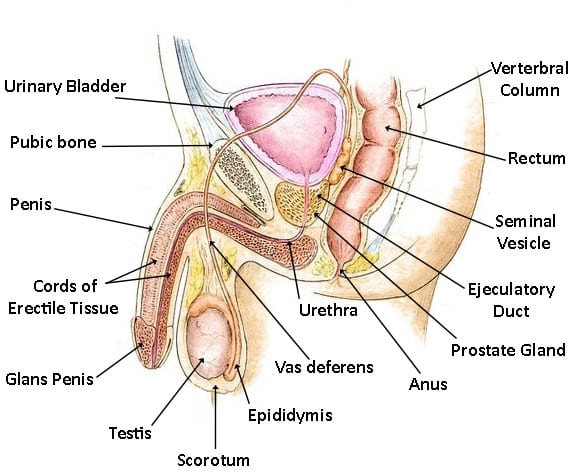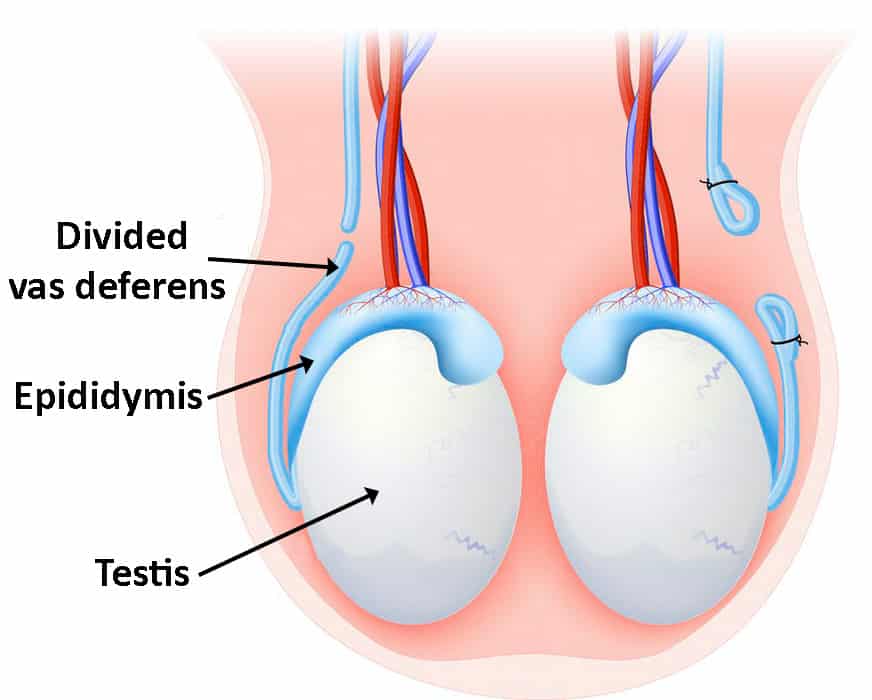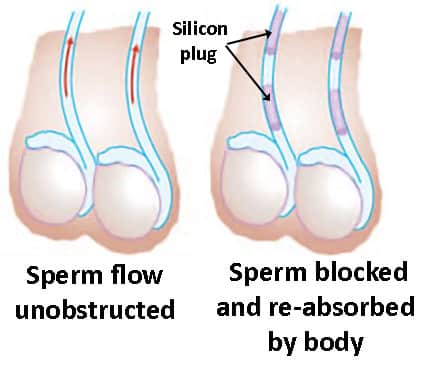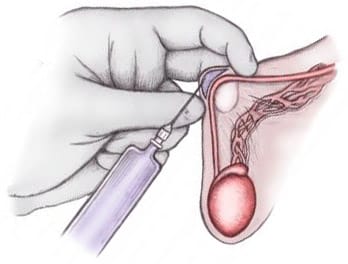Contraceptions are methods that use to prevent conception. Vasectomy is one of them. It is considered as a permanent sterilization method which used for males.

In males, sperm are produced at testicles. When sperm cells mature, they transport to the epididymis.
When a male has an orgasm, sperms transport from the epididymis to the urethra by vas deferens (also known as ductus deferens). Then sperm ejaculates from the far end of the urethra as a response to the orgasm.
In a vasectomy, both vas deferens are ligated, and it prevents the release of sperms during ejaculation. So male semen will be absent from sperms, and it leads to sterilize the male. After ligation of the vas deferens, sperm will absorb by the blood vessels. So sperms will not accumulate in testis.
Although semen doesn’t have sperms, sexual hormones production will not change after vasectomy. So penile erection and orgasm happen as usual, and it does not affect male’s sexual life.
Vasectomy is an easy procedure, and it is not hard as female sterilization (hysterectomy). It performs under local anesthesia (numbness use to the area, and the surgery is performed while the patient is conscious). The surgery takes a maximum of 20 minutes.
Techniques use to block the vas deferens
There are several techniques use to block the vas deferens. Those are,
- Ligation or clips
- Excision
- No scalpel vasectomy
- Silicone plugs
- Sclerosing agents
Ligation or clips

Under local anesthesia, a small incision made through the scrotal muscle. Then both vas deferens are ligated and cut or use clips.
Excision
In Excision, Vas deference is surgically removed.
No scalpel surgery
For this technique, the scalpel is not used. By palpating, vas deference is identified, and a small 3 mm size orifice is created in scrotal muscle. Then vas deference is ligated through the orifice.

Silicon plug

In this technique, silicon is Inject near to the vas deference. This causes vas deference to be blocked by a silicone plug. Scalp is not used in this technique.
Sclerosing agents

In this method, sclerosing chemical injects to vas deference. This chemical cause inflammation in the injected site, and fibrosis will occur in the there. It leads to block the vas deference.
Effectiveness of the vasectomy
Immediate after the vasectomy male isn’t sterile. Because already formed sperm present in the genital track, although the vas deference is blocked.
So those sperm will release in ejaculation.
Because of that, after vasectomy, sperm will be nill only after at least 20 times of ejaculation.
How to confirm the effectiveness of vasectomy
The effectiveness of the vasectomy decides after analyzing the semen sample of the 12th and 16th weeks after the surgery. If two consecutive samples are free of sperm, it considers as a successful vasectomy.
So until 16th, the week after the surgery, the person has to use an alternative contraceptive method.
Complications of vasectomy
- Sperm granuloma- small lump will appear at the cut end of the vas deference if it had an inflammation.
- Produce anti-sperm antibodies- it’s a very rare condition to happen. If the anti-sperm antibody is produced, the production of the sperm will be destroyed by it.
- Chronic scrotal pain- it is also a very rare condition.
However, after a vasectomy, there is a small chance to reverse it again. So the vasectomy considers as a permanent sterilization method.


Very Good information.
Thanks
Thanks 😊